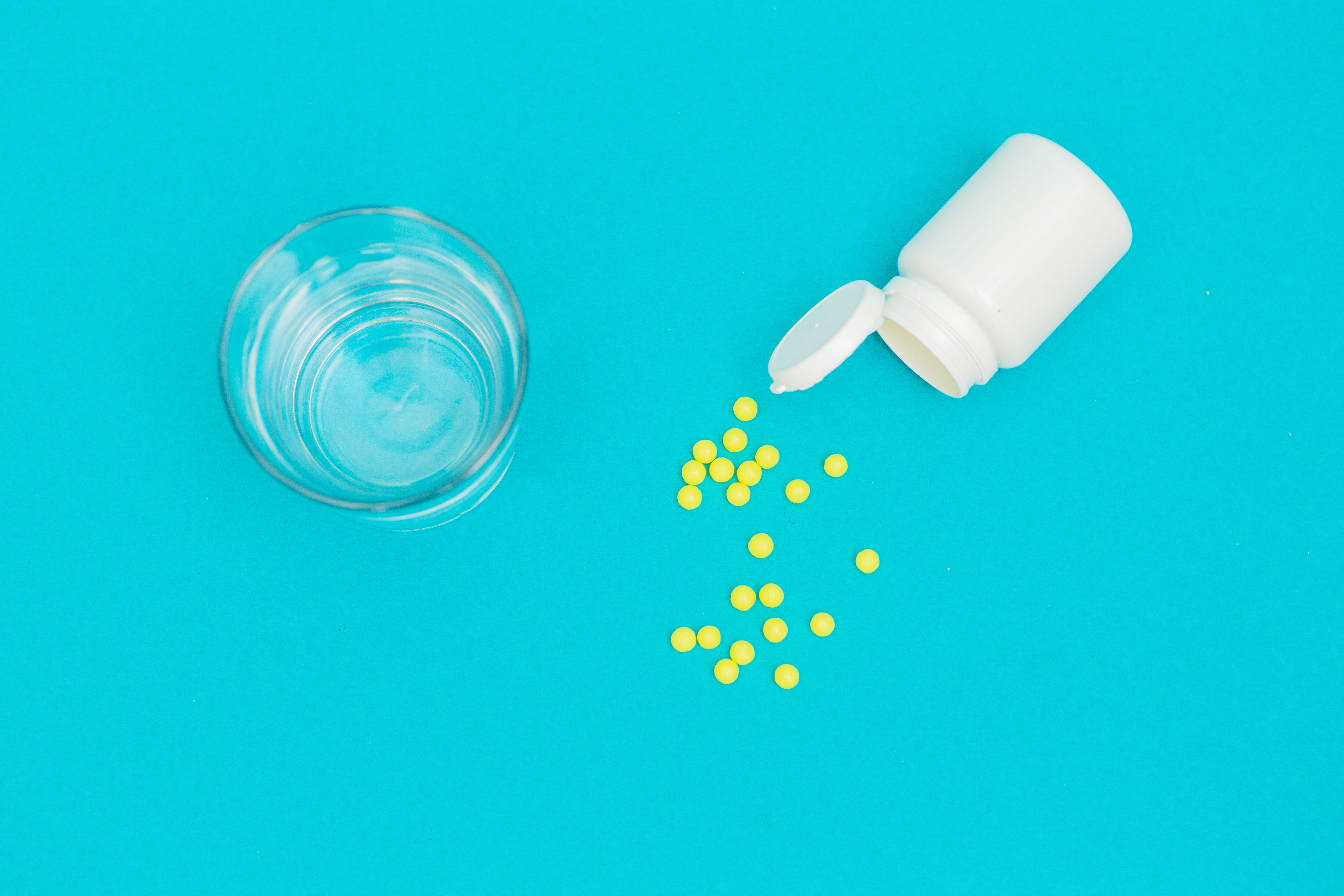We found 68 results that contain "906"
Posted on: edit abstraction is one of the most essential and important features of OOP


Posted by
over 1 year ago
Data abstraction is one of the most essential and important features of object-oriented programming. Data abstraction refers to providing only essential information about the data to the outside world, hiding the background details or implementation. Consider a real-life example of a man driving a car. The man only knows that pressing the accelerators will increase the speed of the car or applying brakes will stop the car, but he does not know about how on pressing the accelerator the speed is increasing, he does not know about the inner mechanism of the car or the implementation of the accelerator, brakes, etc in the car. This is what abstraction is.
Disciplinary Content
Posted on: #iteachmsu


Posted by
over 1 year ago
Posted on: #iteachmsu


Posted by
over 1 year ago
Achieving work life balance is possible with effective time management. Learning time management tips will not only help you manage your time better but also boost personal productivity. With that said, here are some time management strategies you can try:
https://www.usa.edu/blog/time-management-techniques/
https://www.usa.edu/blog/time-management-techniques/
Disciplinary Content
Posted on: #iteachmsu


Posted by
over 1 year ago
When starting with Apache JMeter for performance testing the first step you need to take is to install JMeter on your development machine so that you can develop the test scripts.
For installing JMeter on Mac machine you have a couple of options:
Installing JMeter via Homebrew
Installing JMeter by downloading the archive with the latest release
For installing JMeter on Mac machine you have a couple of options:
Installing JMeter via Homebrew
Installing JMeter by downloading the archive with the latest release
Posted on: #iteachmsu



Posted by
over 1 year ago

Natural resources are the raw materials and sources of energy that we use. Petrol, metals, soil, sand, wind, water, and everything in between are natural resources. Manufactured items such as plastic, sheet metal, fabrics, microchips, electricity and concrete are not natural resources, but are most definitely derived from natural resources.
Natural resources are the raw materials and sources of energy that we use.
Petrol, metals, soil, sand, wind, water and everything in between are natural resources. Manufactured items such as plastic, sheet metal, fabrics, microchips, electricity and concrete are not natural resources, but are most definitely derived from natural resources.
Think about the relationship between natural resources and manufactured products. In essence, we call them “natural” resources because they are things human society uses that are created (or were created in the case of fossil fuels) without human intervention.
Perpetually Renewable Resources
Perpetually renewable resources are the easiest resources to understand; these are natural resources that are constantly replenished by the Sun’s and Earth’s natural processes. For example, every day the sun delivers an average of 198 Watts of energy to every square meter (m
) of the Earth’s surface. For comparison a standard incandescent light bulb in a bedside lamp uses 40 Watts, or a 100kg person climbing a step in 2 seconds uses roughly 200 Watts. Every day without fail for the last 5 billion years (plus or minus a few hundred million years) the Sun has delivered this solar energy.
Together with geothermal energy (heat from the Earth’s interior), the Sun’s perpetual energy powers the winds, ocean currents, precipitation and most of the Earth’s plant life. Solar and geothermal natural resources currently energise a significant and growing percentage of many nations’ electrical grids. It is perpetually renewable in the sense that no matter how much we use in terms of human time-scales (e.g decades to millennia), the Sun and the Earth will always make more.
Intermediate Renewable Resources
Intermediate renewable resources are only renewable resources if we don’t use them too quickly. They are resources such as freshwater, soil, crops and trees for timber. If we didn’t use them, they would be perpetually renewable, but because they require time (on human time-scales) to regenerate or grow, we can overuse them until they are no longer available.
Freshwater is a great example of an intermediate renewable resource. Through the water cycle, the sun evaporates water from the surface of saltwater oceans that travels over land and falls back to earth as freshwater rain. This rain fills the lakes, rivers and aquifers we use for agriculture, industry and drinking water. If we use this freshwater at the same rate as the rain recharging it, then we won’t run out. If we use the freshwater faster than it recharges, then we will. Intermediate renewable resources must be carefully managed to ensure they are not depleted.
Non-renewable Resources
The last category of natural resources are the non-renewables. These are resources that will not regenerate on human time-scales. Once they have been depleted they will no longer be available and no more will be made. The most common examples of non-renewable resources are fossil fuels, so-called because most were created by processes that take millions of years. Fossil fuels include crude oil, natural gas, coal and uranium. Other non-renewable resources include metals, lithium and rare-Earth elements (REE’s), but it’s important to remember that while we may eventually run out of mineable metals and REE’s, with careful waste management, these can be recovered through recycling. However, it is not the same for fossil fuels as using them for energy alters their chemistry so they are no longer useful.
Natural resources are the raw materials and sources of energy that we use.
Petrol, metals, soil, sand, wind, water and everything in between are natural resources. Manufactured items such as plastic, sheet metal, fabrics, microchips, electricity and concrete are not natural resources, but are most definitely derived from natural resources.
Think about the relationship between natural resources and manufactured products. In essence, we call them “natural” resources because they are things human society uses that are created (or were created in the case of fossil fuels) without human intervention.
Perpetually Renewable Resources
Perpetually renewable resources are the easiest resources to understand; these are natural resources that are constantly replenished by the Sun’s and Earth’s natural processes. For example, every day the sun delivers an average of 198 Watts of energy to every square meter (m
) of the Earth’s surface. For comparison a standard incandescent light bulb in a bedside lamp uses 40 Watts, or a 100kg person climbing a step in 2 seconds uses roughly 200 Watts. Every day without fail for the last 5 billion years (plus or minus a few hundred million years) the Sun has delivered this solar energy.
Together with geothermal energy (heat from the Earth’s interior), the Sun’s perpetual energy powers the winds, ocean currents, precipitation and most of the Earth’s plant life. Solar and geothermal natural resources currently energise a significant and growing percentage of many nations’ electrical grids. It is perpetually renewable in the sense that no matter how much we use in terms of human time-scales (e.g decades to millennia), the Sun and the Earth will always make more.
Intermediate Renewable Resources
Intermediate renewable resources are only renewable resources if we don’t use them too quickly. They are resources such as freshwater, soil, crops and trees for timber. If we didn’t use them, they would be perpetually renewable, but because they require time (on human time-scales) to regenerate or grow, we can overuse them until they are no longer available.
Freshwater is a great example of an intermediate renewable resource. Through the water cycle, the sun evaporates water from the surface of saltwater oceans that travels over land and falls back to earth as freshwater rain. This rain fills the lakes, rivers and aquifers we use for agriculture, industry and drinking water. If we use this freshwater at the same rate as the rain recharging it, then we won’t run out. If we use the freshwater faster than it recharges, then we will. Intermediate renewable resources must be carefully managed to ensure they are not depleted.
Non-renewable Resources
The last category of natural resources are the non-renewables. These are resources that will not regenerate on human time-scales. Once they have been depleted they will no longer be available and no more will be made. The most common examples of non-renewable resources are fossil fuels, so-called because most were created by processes that take millions of years. Fossil fuels include crude oil, natural gas, coal and uranium. Other non-renewable resources include metals, lithium and rare-Earth elements (REE’s), but it’s important to remember that while we may eventually run out of mineable metals and REE’s, with careful waste management, these can be recovered through recycling. However, it is not the same for fossil fuels as using them for energy alters their chemistry so they are no longer useful.
Disciplinary Content
Posted on: #iteachmsu



Posted by
almost 2 years ago

The Nehru Stadium in Pune staged one of the biggest upsets in one-day cricket history when Kenya, the minnows, knocked off heavyweights West Indies in the World Cup league game in 1996 in a low-scoring thriller. Popular for being a 'patta' (flat) pitch, batsmen have mostly held sway with any domestic games producing high-scoring draws. Earlier known as the Club of Maharahstra ground, the present name, Nehru Stadium, came into existence in 1969 when Bill Lawry's Australians played their tour game against West Zone. Till now the ground was looked after by the city's municipal corporation, but now with the new office bearers assuming their seats at the Maharashtra Cricket Association, there are plans to give the ground a complete facelift including the re-laying of a new wicket.
Navigating Context
Posted on: #iteachmsu



Posted by
over 1 year ago

Edited... Grab a piece of paper and turn it into one of our many easy paper crafts for kids. We're sharing all kinds of paper craft ideas for kids!
We are crazy for crafts! Seasonal crafts, holiday crafts, rainy day crafts – we love them all. We especially love easy peasy and fun crafts, like these easy paper crafts.
Some of the best crafts are those you can pull out any time of year, with any number of kids, and know they’ll turn out super cute. Our easy crafts are perfect for all ages and couldn’t be cuter.
Home » Crafts » Kids Crafts
101+ EASY PAPER CRAFTS FOR KIDS
This post and its photos may contain affiliate links. As an Amazon associate I earn from qualifying purchases. If you make a purchase through these links, I may receive a small commission at no extra cost to you!
Pinterest
Facebook
Yummly
Grab a piece of paper and turn it into one of our many easy paper crafts for kids. We're sharing all kinds of paper craft ideas for kids!
Crafts with Paper
We are crazy for crafts! Seasonal crafts, holiday crafts, rainy day crafts – we love them all. We especially love easy peasy and fun crafts, like these easy paper crafts.
Some of the best crafts are those you can pull out any time of year, with any number of kids, and know they’ll turn out super cute. Our easy crafts are perfect for all ages and couldn’t be cuter.
Easy Paper Crafts For Kids
Play Video
The best ideas come when given a few different supplies and imagination. Grab some card stock, scrapbook paper, construction paper, or even computer paper. Turn those pieces of paper into a fun projects and fabulous kids' crafts
We are crazy for crafts! Seasonal crafts, holiday crafts, rainy day crafts – we love them all. We especially love easy peasy and fun crafts, like these easy paper crafts.
Some of the best crafts are those you can pull out any time of year, with any number of kids, and know they’ll turn out super cute. Our easy crafts are perfect for all ages and couldn’t be cuter.
Home » Crafts » Kids Crafts
101+ EASY PAPER CRAFTS FOR KIDS
This post and its photos may contain affiliate links. As an Amazon associate I earn from qualifying purchases. If you make a purchase through these links, I may receive a small commission at no extra cost to you!
Yummly
Grab a piece of paper and turn it into one of our many easy paper crafts for kids. We're sharing all kinds of paper craft ideas for kids!
Crafts with Paper
We are crazy for crafts! Seasonal crafts, holiday crafts, rainy day crafts – we love them all. We especially love easy peasy and fun crafts, like these easy paper crafts.
Some of the best crafts are those you can pull out any time of year, with any number of kids, and know they’ll turn out super cute. Our easy crafts are perfect for all ages and couldn’t be cuter.
Easy Paper Crafts For Kids
Play Video
The best ideas come when given a few different supplies and imagination. Grab some card stock, scrapbook paper, construction paper, or even computer paper. Turn those pieces of paper into a fun projects and fabulous kids' crafts
Disciplinary Content
Posted on: #iteachmsu


Posted by
over 1 year ago
Keep Regular Doctor Appointments
No one likes going to the doctor, but it’s important to schedule regular screenings and physicals as you age. If you have a consistent pain or something just doesn’t feel right, make an appointment with your primary care physician to rule out anything serious. Your relationship with your doctor should be open and honest to ensure you get the best care possible.-- edited
Practice Gratitude
This final tip is the easiest one of all: be grateful! Try to leave negativity at the door and focus on all the good things you do have. It’s been shown that positive people live longer. Just like a healthy diet, filling your life with positive people, thoughts and things can have long-lasting positive impacts on your longevity.
No one likes going to the doctor, but it’s important to schedule regular screenings and physicals as you age. If you have a consistent pain or something just doesn’t feel right, make an appointment with your primary care physician to rule out anything serious. Your relationship with your doctor should be open and honest to ensure you get the best care possible.-- edited
Practice Gratitude
This final tip is the easiest one of all: be grateful! Try to leave negativity at the door and focus on all the good things you do have. It’s been shown that positive people live longer. Just like a healthy diet, filling your life with positive people, thoughts and things can have long-lasting positive impacts on your longevity.
Navigating Context
